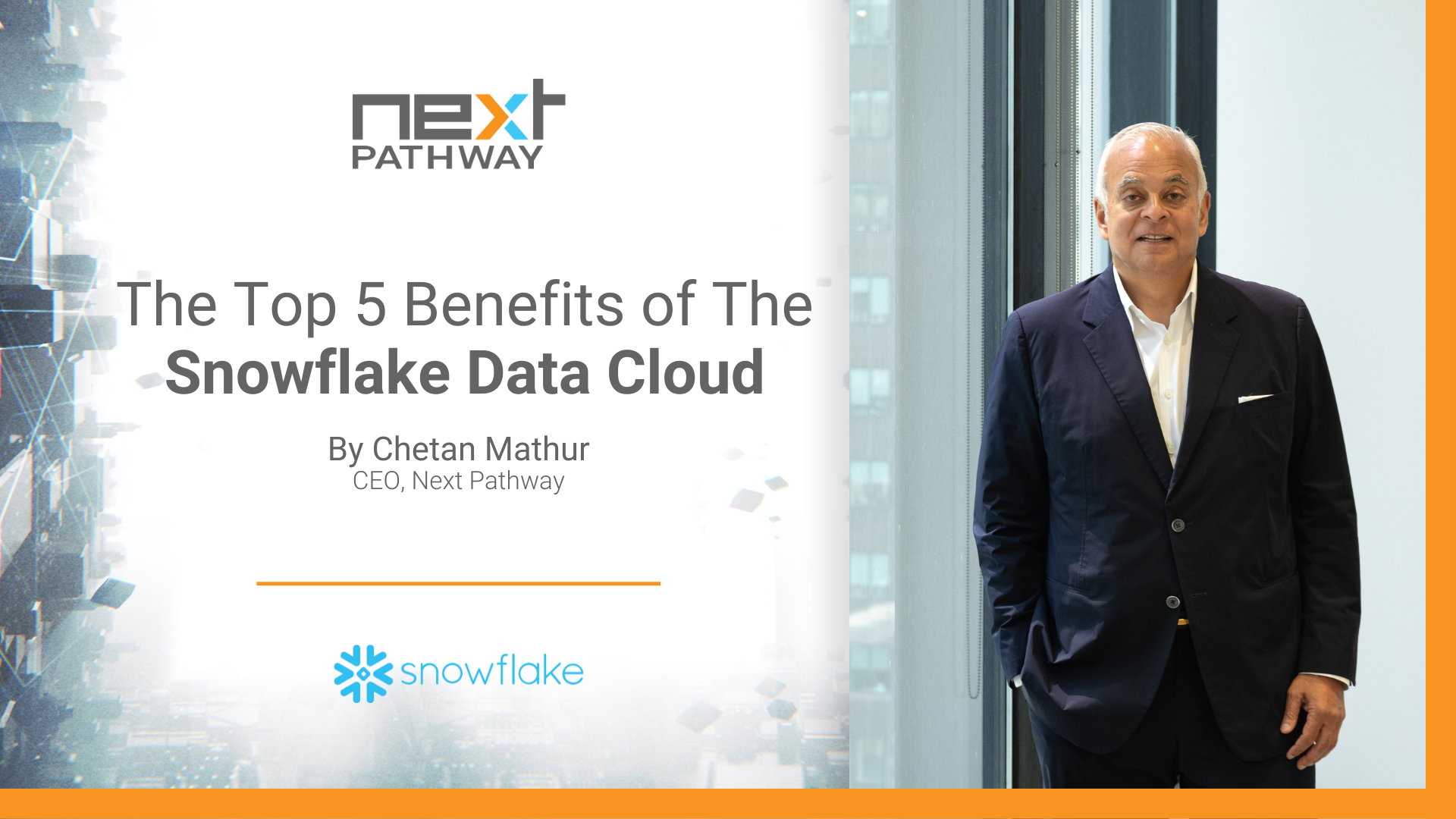A Data Cloud is a platform for a company to store and aggregate their own data from multiple systems (EDWs, Data Lakes, etc); and to be able to connect and share their data with external parties.


Snowflake is a data storage platform that runs on the three major cloud platforms – Amazon Web Services, Google Cloud, and Microsoft Azure. The Snowflake data platform is built from the ground up for the cloud and addresses many issues found in on-prem data warehouses. The Snowflake Data Cloud platform doesn’t require any installation or maintenance. Also, it helps provide near-limitless scalability and performance, and efficiently handles huge volumes of data.
Most importantly, the Snowflake Data Cloud platform eliminates the need for complex ETL data pipeline tools by centralizing data, allowing users to obtain actionable insights and data they need.
Snowflake Data Cloud can benefit businesses in many ways. Here are the top 5:
For a long time, organizations have relied on Enterprise Data Warehouses (EDWs) to bring data out of their silos. EDWs helped consolidate data from multiple sources into one physical space. But as EDWs ran out of capacity, more were built, making the data silos problem even worse. The Snowflake Data Cloud eliminates the problem of data silos, by allowing organizations to have a single unified view of data that spans multiple cloud platforms and regions.
Fragmented and proliferated data accelerates privacy and security concerns. Most legacy systems were not designed to share their stored data easily. However, Snowflake ensures strict governance and compliance with regulatory guidelines while sharing data located among users.
Snowflake users can securely share and exchange data with each other by granting permissions to specific data in their Snowflake accounts. The Snowflake accounts can be located on any of the three major cloud platforms.
Snowflake Migration Checklist: How to Migrate to Snowflake 95% Faster?
Maintaining on-prem systems involves hardware and licensing costs. An increase in storage capacity comes at an additional cost. In contrast, the Snowflake Data Cloud platform enables you to store large volumes of data and only pay for the storage and computing resources that you use.
Data in traditional ETL systems is loaded in batches and not in real-time. So, organizations often end up accessing stale data that does not reflect the current business state. With Snowflake’s data exchange capabilities, consumers receive automatic updates to reflect real-time data changes.
Whatever be your reason to migrate on-prem EDWs and Data Lakes to the Snowflake Data Cloud, getting it done fast and securely is important. Learn how you can accelerate your end-to-end migration to Snowflake with Next Pathway's SHIFT Cloud.
About Next Pathway
Next Pathway is the Automated Cloud Migration company. Powered by Crawler360™ and SHIFT Cloud, Next Pathway automates the end-to-end challenges companies experience when migrating applications to the cloud. For more information, please visit nextpathway.com.